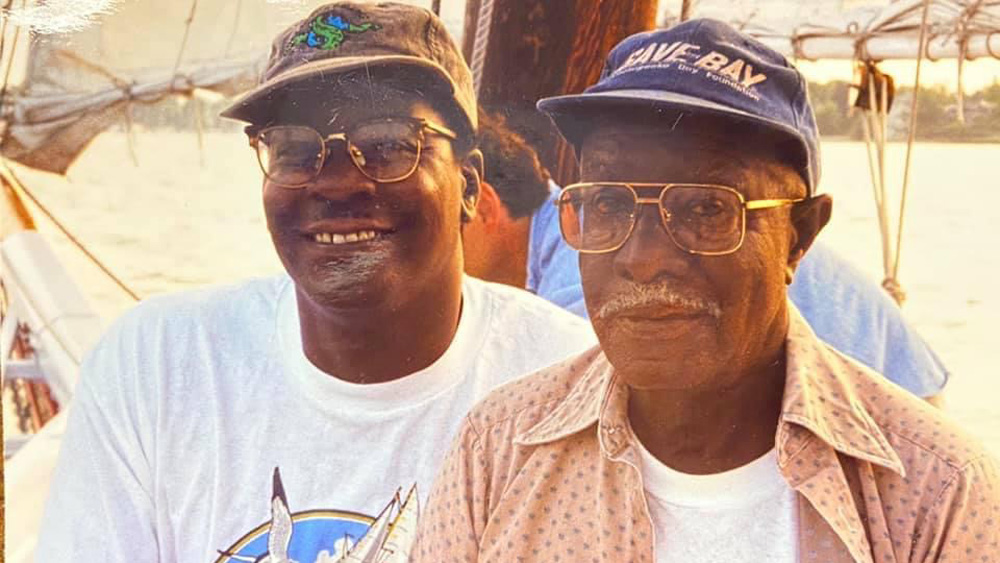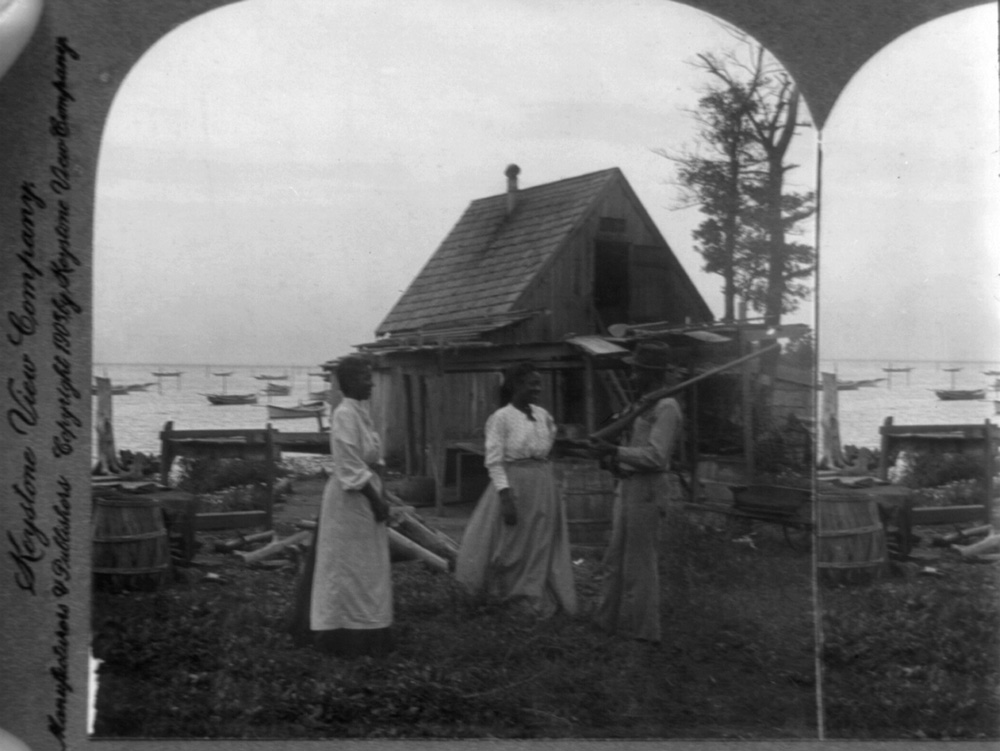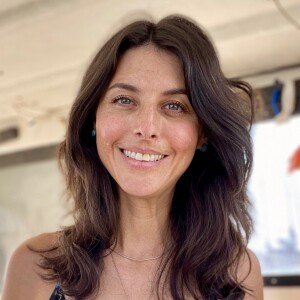For over forty years, Admiral Vince Leggett toed the line of waterman, career educator, and founder of the Blacks of the Chesapeake, a foundation to preserve African American and Black culture on a stretch of the Mid-Atlantic shores. What’s fascinating is how Leggett formulated solutions and connections to uplift all parties while staying true to the mission at hand.
The following is a raw conversation with a true Marylander about becoming a legacy leader in the fishing industry, the inner challenges that arise when a passion project transforms into a pillar of history, and a journey to preserve a past while building a future. (*edited for length)
What It Really Takes To Preserve Fishing History with Admiral Vince Leggett of Blacks of the Chesapeake:
MW: I’d love to hear updates since your talk with Captain Lamont Wright and Imani Black of Minorities of Aquaculture. You mentioned working on a collaboration with the American fishery Society. What have these partnerships meant for Blacks of the Chesapeake?
VL: The American Fisheries Society had its international conference in Baltimore in November last year. They really try to uplift the local people in fisheries, and their research kept coming back to me.
A conference planner from the University of Virginia Charlottesville asked if I would be willing to participate. I had asked if they honor or expense. He indicated it was above his pay grade, but he set up a meeting with the president of the board and the CEO.
From that conversation, it migrated from a potential honorarium to being a keynote speaker in the opening session, an exhibit on the trade room floor for three days, and other potential collaborations.
It is just an example of me asking a question, and the person was honest that he couldn't answer it. But once the president conversed with me, they saw much more value.
So, yes, every twenty-eight days, bills come in for rent for the office (and others relating to Blacks of the Chesapeake), and I'm always finding a way to cover those expenses.
But it's the partnerships and the collaborations that really have more value than the dollars.
Intuitively, I worked my way through those relationships, and I've found that I’ll always (be able to) pay the rent and the phone bill. But, I've never really had hard currency in the relationships from the last thirty-something years that I've been doing Blacks of the Chesapeake.
Through working with the Smithsonian, Comcast, the Library of Congress, and other institutions, we have been able to keep the lights on and keep moving this body and work down the field.
How do you feel about the Blacks of the Chesapeake today than when you first started?
I have worked for forty-five straight years, and Blacks of the Chesapeake has always been a collateral activity to jobs. I worked in K-16 education for twenty-two years in Baltimore City and Anne Arundel county and community college, and former president of the board of education here, in Annapolis.
But I’ve also been CEO and president of two housing agencies in the county and ten years at the Department of Natural Resources. In that collective forty-five-year span, supervisors would bring me into the woodshed and say, “Vince, if you had as much enthusiasm for the job as you have for Blacks of the Chesapeake, we'd all be further along.” <Laughs>
So, if they didn't approve of the work, they at least tolerated it.
But in response to your question, the lines were so thin.
I might go into a high-level meeting with a college president or somebody from the governor's office. They would say, “Well, Vince, what hat are you wearing today?" And so I always navigated that world because they weren't sure who they were talking to. When you have a profile of that height, it's easier for people to get the lines blurred.
And in some cases, the consequences are more grave than others. Now that I'm out of the workforce and working for my foundation and my other passion interest, I have that inherent conflict.
As long as I didn't have real money, it wasn't a real big deal to people. But once I started being involved in six-million dollar land acquisitions, it brought a different level of scrutiny.
I wasn't at liberty to share the assignments they had me on with anybody. It was a need-to-know basis. (For example) I’d say, “If you want to know what the governor has me working on, here's his phone number.”
Because many times it was just a walk-through-the-park conversation with someone that was or wasn’t official. But I knew what both sides were after, and my job was, see if I could find a happy place where everybody could stand. And I became comfortable operating in that world.

I can see where that can be a challenge. Though, with your unique understanding and experiences, how do people and organizations work with you?
I graduated from Morgan State University (in Baltimore, Maryland) in their urban programs, so I'm working with their planning and landscape and architectural department on community-based projects to help them engage with the community. Whenever these institutions come into the community, they need someone on the ground that can operate as the field representative.
And because the Blacks of the Chesapeake has developed trust in many of these communities over the last three decades, it is easier for us to represent that stability and that truth in the community.
So often, underserved limited-resource communities feel like they get surveyed, and their lives aren't any better once the surveyors leave. So there's a good reason why these communities are reticent, to open their arms and hearts and minds to folks saying I'm coming here to help, even if they look like them.
I think that goes back to the poverty era in the sixties when all of the universities were researching African American model city communities. Once the caravans packed up, their lives weren’t any better. It’s that shared memory, shared experiences.
To me, that is the strength of Blacks Chesapeake because our work is trying to leave places better than we found them.
We aren't afraid to ask the question, What can we do to help you?
It's not just what we want.
I find that many institutions – black and white, government, and all private sector – are very reluctant to ask that question because they’re afraid of the answer. But until you can respond to the question, you never really pierce the veil of trust and collaboration.
“Pierce the veil.” That is so good. What needs to be in place to benefit the future of Black commercial fishermen?
From a career opportunity standpoint, if the goal is to increase the presence of minorities, African Americans, and underserved populations in emerging environmental fields, and you don't have the facilities for teaching it, that is a further setback. That's working against our objectives.
Those are the collaborative issues that we work on with the American Fishery, similar to the ties to the National Aquarium in Baltimore.
As I mentioned, my career background is walking between opinions. And (for example) it's a real conundrum to be before the Legislative Black Caucus, advocating for millions of dollars, and the priority on their list is equal justice under the law of healthcare education, but none of the resources you are asking for address those issues, and the ones you do are packaged as “save the tree, save the fish.”
A different narrative needs to come into the conversation, and we present that different narrative.
My work, our work, evolved over time. Now my ask in all of these deliberations is resources to build capacity within the Blacks of the Chesapeake so we can continue to do the work. If the system finds it useful and beneficial, most check the box “Yes.” No one says it's not useful. No one says it's not beneficial.
Our point is, well, without resources, we can't continue to do the work that you all find useful and beneficial.
How can others help support your cause and message? What can we do?
One of the things is to continue to amplify the work that we do. I'm also looking for other opportunities and like-minded people to see where there could be value added to the fisheries, the National Park Service, or the Smithsonian because there are groups that I currently interact with now.
I'm expanding my bandwidth so I can do more. And what I would also say, Megan, is that for the last thirty years, I haven't really focused on “empire building.” I mean, fancy offices and fifteen people on staff.
My thing had been the subject of people who were seventy years old thirty years ago, and I made my case around documenting their stories and lives, rescuing artifacts, and rescuing property. I made that more of my focus rather than trying to build a multilayered institution.
Right now, I’m closer to seventy than sixty, so I have changed my focus to move the Blacks of the Chesapeake from a personality-driven operation, which is not sustainable, to a more institutionalized entity and finding people to walk hand in hand and heart with us to achieve those objectives.
Education, history, culture, and the environment.
I've found from my twenty-two years in K-16 education that I look more at informal education programming, after-school and summer programming, rather than the nine-to-five education world because I've been on both sides of it.
It turns slow. It's like the Bermuda Triangle – things come in the front door, but nothing comes out the back. (re: limited resources, accountability, and teaching the test) Even more so after the national pandemic, it's harder getting the schools now during the nine-to-three, nine-to-four timeframes.
My work with Historically Black Colleges and Universities (HBCUs) has been an answer to that for me because I found whether it’s a fourth grader at Martin Luther King Junior High School or the post-doctorate professor at the University of Maryland Eastern Shore (or Morgan University, or any HBCU) neither can find the “on-ramp” to the million-dollar Chesapeake Bay industry any easier than the other.
My experience after thirty years is it is really a closed shop and a closed community, and unless someone guides you into and through that system, it is very difficult to penetrate the veil.
We are currently working with the Maryland State archive to catalog inventory and digitize our thirty-year collection. Memorabilia of over 40,000 photographs, oral histories, VHS cassette tapes, materials, and records. This is a multi-year initiative, and right now, it's in boxes that are not the best practice from a library science or a conservation science standpoint.
The whole purpose is to make our collection available to us. Also, to make this material available to researchers and scholars, but more importantly, to make it available to teachers and students.
My 22 years in K-16 education have concluded that teachers can't teach what they don't know.
And the way the people who are going to be able to package it get it approved on the list of supplemental materials. So they aren't trying to Bootleg material into the classroom, but vetted, let it go through whatever vetting the school systems, and curriculum people decide that we have done that.
We have a record of doing it. We know how to do it.
I think it's going to go a very long way to institutionalize in Blacks of the Chesapeake. We did receive a grant from the Maryland center for history and culture.

Wow, that's great! So it went from history almost being erased to the history being one of the most well-preserved out there.
Yes. And again, that's that long view because they want this collection to be fifty years from now. People will come to the Blacks of the Chesapeake because we captured a slice in time.
What may become in place is only going to grow in importance. And the other thing they helped me with is that with a collection such as this, it's not necessarily the prettiest or the best photograph, but you captured an activity that was happening. And unless you were there, you did not capture that image.
Traditionally — if you go to any college, public, or university library and pick up books related to Chesapeake bay – it's primarily about crab picking and oystering with no titles and no attribution.
And what we have done for the last thirty years is trying to identify what appears to be extraordinary feats of African Americans and all aspects of those industries, from boat builders to Coast Guard, certified captains, to sail makers, seafood processing owners, to bay pilots. So we show that we have had significant involvement in all aspects of the industries.
What stories can you share about Black history on the Bay?
A big part of it looks at leisure, recreation, and entertainment on the Chesapeake Bay, during the period of segregation. This is really a hot topic.
We had a family here in Annapolis that amassed 180 acres directly on the Chesapeake Bay that became the Mecca of entertainment in the Mid-Atlantic region. Privately owned beaches by two African American females, and many of the Hall of Famers – the James Browns, the little Richards, the Billy Holidays – went to these beaches.
Well, out of these 180 acres, there were only five acres left. The rest of it is either institutional or privately-owned and gated communities. We led an effort to rescue the last remaining five acres and were part of a team that cobbled together seven million to purchase it.
As an example of how it ties back into the fisheries, James Brown would attract 10,000 people to this beach. Chuck Barry attracted 70,000 people right here in Annapolis. The roads were so jammed up, but the boat captains, the watermen, were like the Uber drivers in their forties, fifties, and sixties. And they would bring their patrons to the beach on their boats.
And just looking at the economic impact, how those African Americans and others, including Whites, could innovate and not get stuck in the mud on what used to be fifty years ago — showing how the fishermen used their knowledge and even encouraged people to the beaches.
But I've seen that women have played a significant role in these enterprises beyond crab picking and oyster shucking, and they have challenged me to lift them up and celebrate their stories as well.
And I think that brings some freshness to the whole dialogue of the Chesapeake Bay Waterman.
So, perhaps I can bring that up for our next interview on the importance of Partners of Commercial Fishermen?
Right. I saw your note in the email, and I know that there are female captains, there are women that were on the commercial side of the fisheries, and that's just one story.
To connect with Admiral Vince Leggett, visit Blacks of the Chesapeake.com.
Feature image: Fishermen dredge for oysters in the Chesapeake Bay, c. 1905. Image: Keystone View Co., courtesy of the Library of Congress via NOAA.gov
For more on the commercial fishing lifestyle, visit meganwaldrep.com







